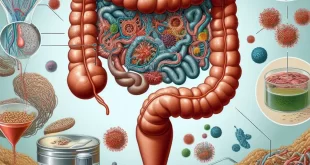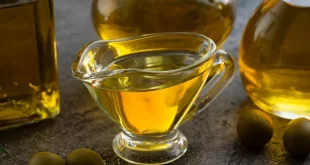Well, do not dwell too much on its taste comparable to the muddy pond scum, you could miss out on its sumptuous benefits!
1. The most nutritious food on our planet?
The concentration of protein and vitamins in Spirulina has led many nutrition experts to classify it as ” the most nutritious food on the planet ” (she is fighting this title with her cousin, chlorella).
Indeed, if we compare our super seaweed to other foods gram for gram, it turns out that spirulina platensis (his other little name choupi) does not steal his title, see for yourself.
protein
At the protein level first, the blue green alga is considered a complete source of high quality protein, often compared to eggs for the amount of protein per gram. As if that were not enough, this protein is very assimilable and has a net utilization rate between 50 and 61%.
What must be pointed out, and that I see too little write, is that you will not swallow your 80g of daily protein just with spirulina, at most you can take in 5g spirulina per day, about … 3g of protein (for the best seaweed) and more in the balance!
Still that price nevertheless.
Vitamin B1
Also called Thiamine, this vitamin is necessary for the digestion of fats and proteins precisely. It is often eaten to increase energy, eye health, brain function and to improve the functioning of the nerves.
Iron
An excellent source, recommended for all our vegetarian / vegan friends. Even for those who consume meat and fish, the iron contained in spirulina is highly absorbable in addition to not “tickling” the digestive system.
Calcium
Spirulina is also incredibly high in calcium with over 26 times the calcium in milk . I come back to the same small point that for protein, you can not consume daily the equivalent of a large glass of spirulina milk. Unless Fleury Michon brings us spirulina steaks one day (I’m sure I have a truck there).
Other nutrients
There is a mess (according to the friend Wikipedia):
- vitamins B-1 (thiamine)
- B-2 (riboflavin)
- B-3 (nicotinamide)
- B-6 (pyridoxine)
- B-9 (folic acid)
- vitamin C
- vitamin D
- vitamin A
- Vitamin E.
It is also an interesting source of potassium, calcium, chromium, copper, iron, magnesium, manganese, phosphorus, selenium, sodium and zinc. Spirulina contains many pigments that can be beneficial and bioavailable.
Important note: contrary to many claims, our microalgae is not a good source of vitamin B12 in humans.
Although it undeniably contains a form of B12, it is a ” pseudovitamin B12 ” that is not absorbable (at least inefficient in us poor humans).
It’s not me who says it, it’s science !

Source of computer graphics: see the dossier on spirulina on the site of sports equipment.
2. It contains gamma linolenic acid (GLA) and omega-3
It is composed of 65% protein and amino acids, including the essential fatty acid gamma linolenic acid (GLA), which has attracted a lot of attention for its anti-inflammatory properties (especially when it is taken with other supplements such as quality Omega-3 … well wish it’s good).
Why is it great?
Well it’s great because this famous GLA is very difficult to find in a food source and should normally be produced by the body! Spirulina is one of the rare foods on this planet to have, and that’s beautiful!
Well, besides that, spirulina also contains Omega 3, 6 and 9 (all the family, but especially Omega-3.)
3. It can help maintain blood sugar levels
Studies show that Spirulina can be particularly useful for balancing blood sugar levels and can sometimes be as effective as some diabetes medications.
Other studies show that its consumption can not only reduce blood glucose levels, but also HbA1c, a long-term marker of blood sugar levels.
4. It contains very powerful antioxidants
Antioxidants are powerful substances that protect our cells from potential damage. Thanks to decades of research, we have been able to establish that consuming enough antioxidants from natural sources is absolutely essential!
Spirulina platensis is an excellent choice in this field.
The antioxidant that makes our super seaweed so unique is called phycocyanin , it is a formidable anti-inflammatory, it is also what gives spirulina its blue-green hue.
After testing in an independent laboratory, the researchers found an ORAC score ( Oxygen Radical Absorbance Capacity ) of more than 24,000, which corresponds to 4x ORAC score of blueberries (yet champions in the field)!
The ORAC score is generally used to measure the capacity and concentration of antioxidants in different foods. Here is a resource with ORAC scores of many foods.
5. Could be an ally in the treatment of allergies
Some research (like this one) seems to suggest that Spirulina may be useful for those with allergies or allergic reactions. This is probably due to its ability to reduce the inflammation that is the cause of nasal congestion and other problems.
In studies, those who took spirulina noticed a reduction in nasal congestion, itching and sneezing. We can not say that the microalga has this power, but it’s worth it to test nonetheless!
6. Spirulina has the power to fix heavy metals
Spirulina can actually fix the heavy metals present in the body and evacuate them, not bad huh!
In addition, its high concentration of Chlorophyll allows it to eliminate toxins from the blood and stimulate the immune system. In fact, one study found that 5 grams of daily spirulina combined with zinc supplementation were enough to reduce the toxicity of arsenic by almost half!
We are also beginning to talk about its potential utility for exposure to radioactivity (or for radiation therapy), because of its ability to fix radioactive isotopes.
7. Incredible benefits for muscular endurance
Super seaweed is known to increase fat burning during exercise. Its high antioxidant content helps reduce the oxidation caused by exercise leads to muscle fatigue and an inability to take muscle, notice to the cast lifters!
Studies have shown that she is able to:
- to increase endurance (see https://www.ncbi.nlm.nih.gov/pubmed/20010119)
- to reduce the damage to muscles (see https://www.ncbi.nlm.nih.gov/pubmed/16944194)
HOW TO BUY HIS SPIRULINA?
You’ll tell me, it’s very simple, I just have to go to the small local bio shop or pharmacy (absolutely no guarantee of quality) and get your hands on the first pot of spirulina came. Yes, but no, it’s a bit more complicated and there are some basic rules to follow when choosing your Spirulina:
- Organic spirulina does not exist as such (read my article on the subject), but some certifications are good to take, so we monitor that spirulina purchased is certified “Ecocert” or “AB”
- We check the provenance (we promote as much as possible French producers) and we avoid China and India, which have standards a little more lax …
- We pay attention to really low prices, often sign of a method of production and / or drying that is not very respectful of the environment and the product
- If you buy online, you can see if the supplier provides analysis of the composition of the product, analyzes that are supposed to detect all traces of heavy metals
- The composition of the product is monitored, and particular attention is paid to the level of phycocyanin and protein in the product (the higher they are, the more qualitative Spirulina is)
- One chooses a form of spirulina less transformed possible, preferably spirulina with flakes and spirulina powder
WARNING, DANGERS OF SPIRULINA
Before consuming the microalgae, you should talk with your doctor if you are on anticoagulants. The same goes for those who suffer from autoimmune diseases and all pregnant and lactating women.
As for the dangers of spirulina, if you are not in the categories listed above, there is not really anything to worry about. The only side effect you might fear is possibly having a small diarrhea in case of over consumption.
The small defects of spirulina
As we understand, this food is great, but it pays the price of its success, or rather, it is we, consumers who pay.
Because quality spirulina (which you should always favor) is simply very expensive when it comes to cost per gram. It is about 30 times more expensive than dairy or animal protein!
But hey, it’s the price to pay for a food of this quality, never fall into the panel of cheap supplements, because some manufacturers do not respect anything, and take shortcuts to produce always more and faster, cheaper. You could lose all the benefits of microalgae and endanger your health (while you just want the opposite).
 medjouel.com Study Non Stop
medjouel.com Study Non Stop



